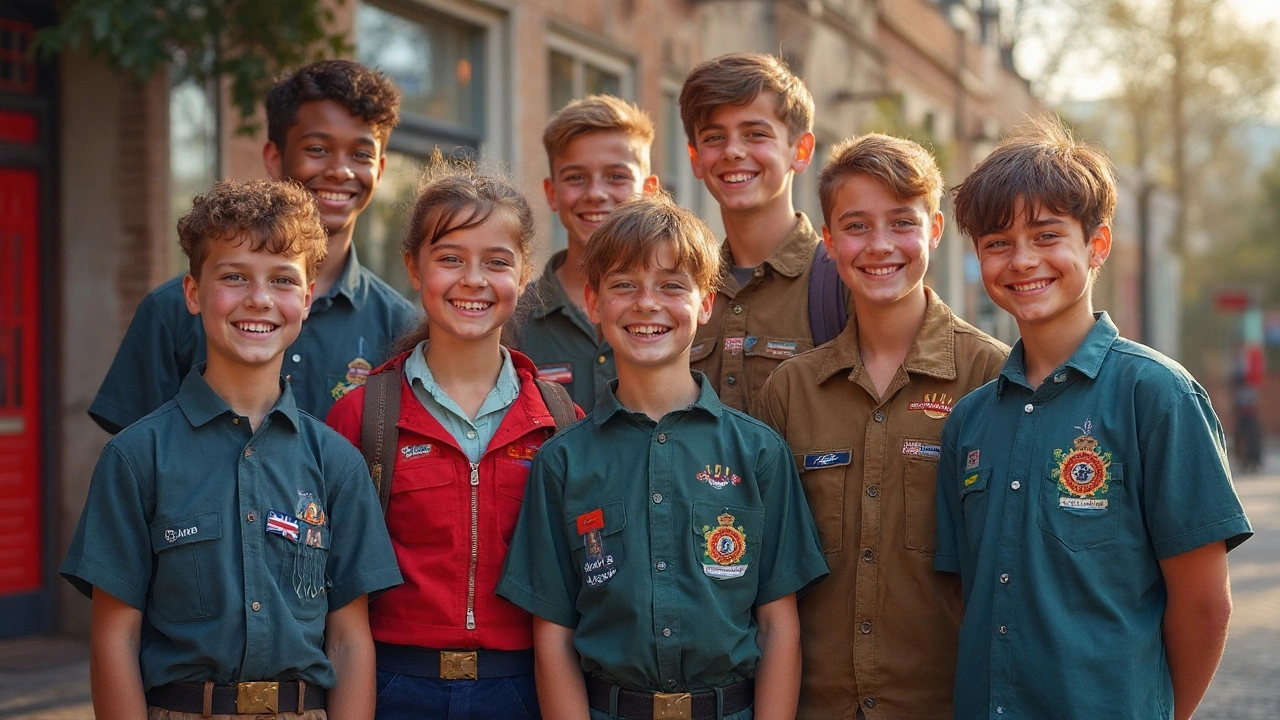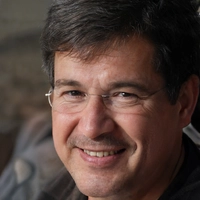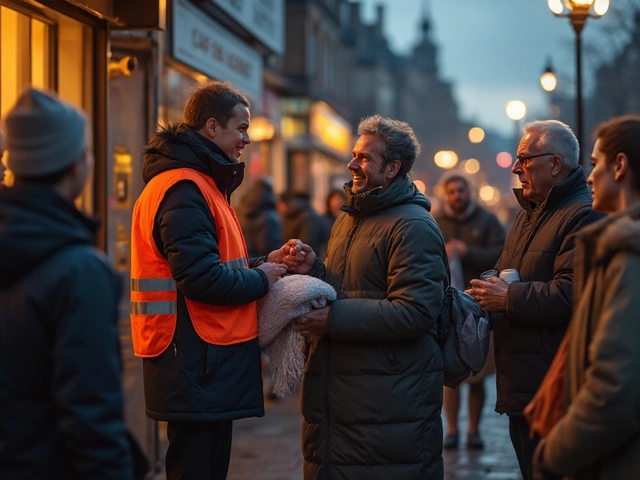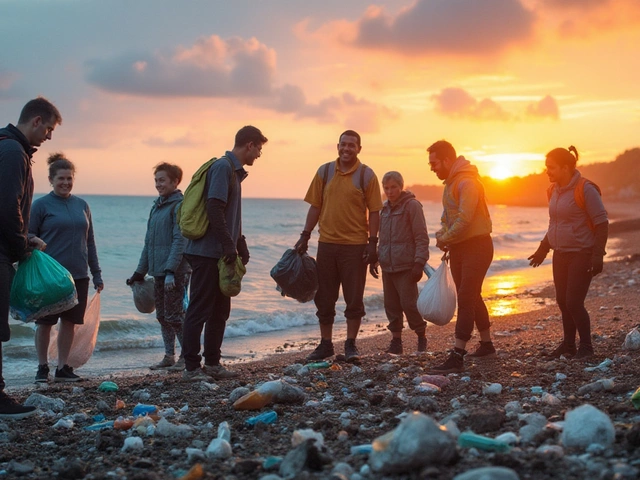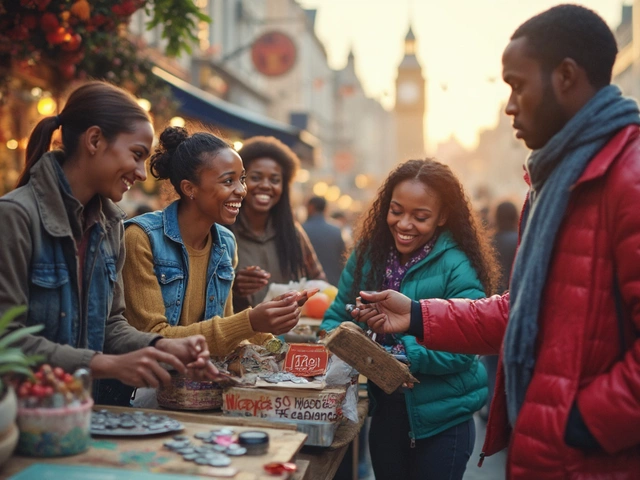The Big 6 Youth Organizations: Guide to Global Youth Leadership & Volunteering
Ever wondered what connects over 250 million young people from more than 170 countries and teaches them leadership, teamwork, and responsibility all while making the world a better place? That's the Big 6 youth organizations for you. These aren’t just clubs for passing time after school. Together, they're the real engines behind some of the biggest positive youth movements worldwide, touching lives, shaping communities, and building tomorrow's leaders from all corners of the globe—Auckland to Zurich, Lagos to Lima. If you’ve walked past a group in bright uniforms leading a clean-up drive, or seen badges traded at an international camp, there’s a good chance you’ve crossed paths with the Big 6.
What Makes the Big 6 Stand Out?
What’s special about just these six? The Big 6 youth organizations have more than century-old roots and massive reach. We’re talking about World Organization of the Scout Movement (WOSM), World Association of Girl Guides and Girl Scouts (WAGGGS), International Federation of Red Cross and Red Crescent Societies (IFRC), YMCA, YWCA, and The Duke of Edinburgh’s International Award. Combined, they offer safe communities, opportunities to travel, life skills, and real responsibility—stuff you won’t find in textbooks.
Here’s the kicker: these groups aren’t just stuck in the past with tradition. They help shape international policies, tackle climate and social justice issues, and give youth a direct voice at the United Nations. When you join one, you’re not just signing up for camping or charity—you're joining a movement with real clout.
| Organization | Founded | Members | Global Reach |
|---|---|---|---|
| WOSM | 1920 | 57 million | 172 countries |
| WAGGGS | 1928 | 10 million | 152 countries |
| IFRC | 1919 | 14 million volunteers (half under 30) | 192 countries |
| YMCA | 1844 | 64 million | 121 countries |
| YWCA | 1855 | 25 million | 120 countries |
| Duke of Edinburgh's Award | 1956 | 8 million (since start) | 130+ countries |
You won’t find another set of youth groups that come close to these numbers or get as much say at global roundtables on issues like the Sustainable Development Goals. Just last year, WOSM and WAGGGS agreed on climate targets aligned with COP28, showing that your campfire might just spark a bigger fire in terms of change.
The Missions and Impact of Each Organization
Now, what exactly do these groups do, and how do they change lives? Maybe you know someone who got their first taste of public speaking thanks to a YMCA debate tournament or met their best mates volunteering for Red Cross. Each Big 6 member targets different needs, but at their core, they build community and skills for life.
- WOSM (World Organization of the Scout Movement): The Scouts aren’t just about knots and tents. Sure, you’ll learn survival skills, but also how to run social projects, fundraise, and navigate leadership. Their world jamborees draw scouts from every culture, and their badges now cover everything from robotics to climate action.
- WAGGGS (World Association of Girl Guides and Girl Scouts): These global guiding groups empower girls to lead in whatever form that takes—advocating for girls’ rights, running STEM projects, or tackling street harassment. They reach places where girls are often second-guessed, helping more than 10 million find their voice and strength.
- IFRC (International Federation of Red Cross and Red Crescent Societies): The Red Cross youth aren’t just medics in training; they’re first responders at natural disasters, champions for mental health, and founders of local campaigns. The Red Cross provides tools to act in emergencies (think first aid, disaster response) but also in day-to-day life challenges.
- YMCA (Young Men's Christian Association): Don’t let the name fool you—the YMCA is now for everyone, regardless of gender or faith. Their centers run everything from health classes and swimming pools to leadership bootcamps and community support programs. Their work in youth mental health and inclusion is especially big in places like New Zealand and Australia.
- YWCA (Young Women's Christian Association): The YWCA leans into advocacy, women’s rights, and safe education for young women everywhere. They’re most famous for pushing gender equality initiatives and offering self-defense, financial literacy, and workplace readiness for girls.
- Duke of Edinburgh’s International Award: This isn’t a typical group with meetings and uniforms. It’s about setting individual physical, skill-based, and social goals. Young people pick personal projects—like volunteering, a new sport, or learning guitar—then smash through their limits, gaining recognition that’s respected worldwide. In New Zealand, most employers recognise a Duke of Ed. Gold Award the same way they’d value top sporting or academic achievements.
The numbers really add up. Red Cross youth volunteers step in at every major global disaster. YWCA and YMCA branches support thousands with job help and safe spaces. Scout and Guide programs build from the ground up—helping rebuild villages after cyclones in the Pacific or coaching teens out of risky behaviour in townships. Duke of Ed participants have logged over 200 million hours volunteering since it began. Real impact, real people.

How to Get Involved and What’s In It for You
You don’t need to have parents who went to Scouts or Guides. You don’t need extra cash, or to be super fit. The Big 6 welcome anyone aged roughly 7-25, and adults can get in on the action too, either through volunteering or leading events. If you’re in Auckland, you’ll find local groups for all of these, from North Shore to South Auckland—often meeting in schools, community halls, or even parks.
What do you get for your effort? More than a badge or a certificate. You get friend networks that last a lifetime, confidence to stand up in any room, and a global stamp of approval on your CV or uni application. In fact, a 2022 study in the UK found that 74% of employers viewed Duke of Edinburgh’s Award holders as more “work ready”—not bad for something you can do part-time alongside school.
- YMCA fitness and lifeguard certificates are recognised by sports and rec employers.
- Red Cross first aid and youth peer support badges are gold for anyone eyeing health or social care careers.
- Girl Guide Gold Awards or Queen’s Scout Awards look sharp for university scholarships or leadership roles.
- Duke of Ed’s focus on volunteering gives you stories and skills that actually stand out at job interviews. Imagine talking about hiking 40km through Fiordland or fundraising for cyclone relief—beats “I work hard” any day.
Here’s a little tip: each group has scholarships, travel grants, and exchanges. You can swap badges and stories at jamborees in Korea or help YWCA youth organisers shape the next International Women’s Day. And with online programs stronger since 2020, kids isolated in rural areas or in lockdown still join in, building leadership skills from a laptop in their bedroom.
Auckland is a hot spot for international events—2017 and 2024 saw world Scout jamborees, and in 2023, IFRC coordinated their Youth Assembly here, inviting disaster relief teams from across the South Pacific. So you might end up at the centre of change right at home.
Tips for Picking the Right Organization (and Making the Most of It)
So, which Big 6 youth organization should you pick? It’s not about which is “best”—it’s about what fits you now, and how much time you’ve got. If you want structure, uniforms, and camps, Scouts and Guides are your people. More of a solo goal-setter? Try Duke of Edinburgh’s Award. Want to learn first aid or get into frontline action? IFRC’s your game. Or maybe you want something broad for sports, leadership, and community? Check out YMCA or YWCA.
Some youth sign up for every group going, others juggle just one and go deep. If you only have a few hours each week, focus on getting trained (like first aid certification) or joining a camp or special project. The best way to visit is just to show up—youth meetings usually welcome visitors, and you can check out the vibe before joining. If costs are a worry, ask about fee waivers or help with gear—you’d be surprised how many options are out there.
Make sure to:
- Ask leaders about events that can take you overseas or to national camps—these often have funding you don’t hear about unless you ask.
- Jump in on badges or projects that scare you a bit—the stretch is where growth happens. Maybe you hate public speaking, but debate at YMCA? Worth a try.
- Stick with a project long enough to finish. Whether that’s a Guides camping badge or a Duke of Ed volunteering placement, you get noticed for seeing things through.
- Use group socials to connect—most have busy Instagram, Discord, or Facebook groups, and you’ll find opportunities popping up daily.
One last thing: don’t think age is a barrier. Plenty of ex-Scouts, Guides, Red Cross youth, or Duke of Ed participants end up leading as adults, managing events, or shaping new policies. The Big 6 make space for you at any stage, whether you’re a nervous 13-year-old or a uni grad looking for a way to give back.
Hundreds of Aucklanders use Big 6 connections every year to start environmental campaigns, run disaster relief, or just build genuine friendships. In a world where youth activism is making headlines—climate strikes, social media campaigns, real changes—a Big 6 badge or award can open a load of doors. That’s the real secret: these aren’t just youth organizations. They’re launchpads for making your mark, wherever you start from.

